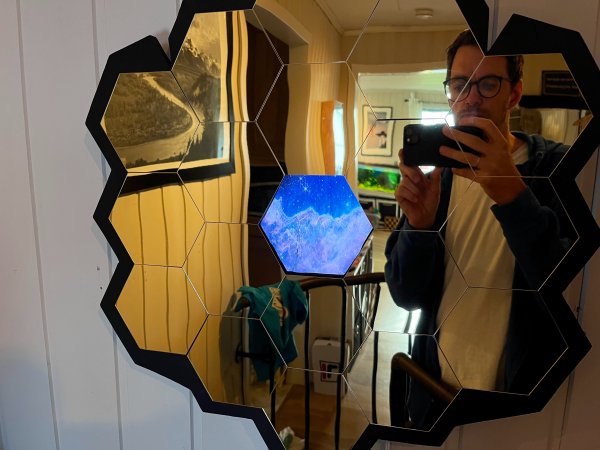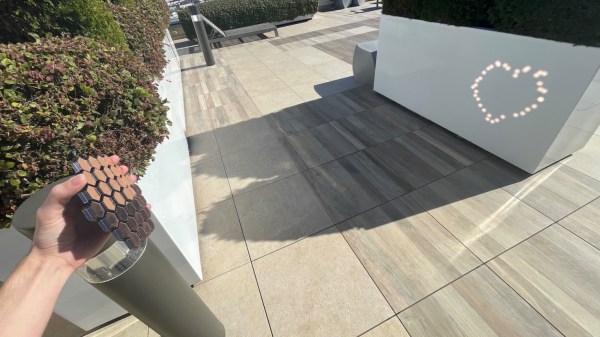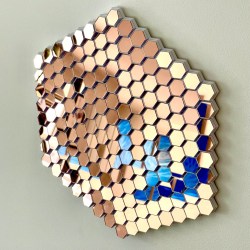The James Webb Space Telescope (JWST) generated considerable excitement when its first test images were released earlier this year: they proved that the instrument was working and helped its engineers to set up all systems for maximum performance. But the real proof of the pudding came last week, when the first batch of beautiful full-scale pictures was unveiled. If you thought those pictures were pretty enough to hang on your wall, you’re not the only one: [Fredrik], also known as [Cellar Nerd], built a wall-mounted display, shaped like the JWST’s main mirror, that cycles through images taken by the space telescope.
The frame holding the mirror is made of plywood. [Fredrik] designed it in Fusion 360, but decided to cut it by hand using a jigsaw; 3D printing the thing would have resulted in a large number of small pieces that might be hard to fit together with sufficient accuracy. After cutting the wood and painting it black, it was simply a matter of sticking the mirror tiles on top and the basic JWST design was done.
The set of eighteen golden hexagonal mirrors might seem to be the hardest bit to make, but was actually the easiest: [Fredrik] simply bought them ready-made on Amazon. The item’s description didn’t include any precise measurements, so he had to wait until the mirrors arrived before he could make the rest of the setup. The segments also don’t have the nanometer accuracy required for a real telescope: in fact, they’re not even flat enough to be useful as an everyday mirror. But that doesn’t really matter: the whole setup is pretty enough that [Fredrik]’s wife even wanted it to have pride of place in the hallway.
An old 15.6″ laptop display sits behind the frame and shows an image through the gap in the center. The display is quite a bit larger than necessary, so the images are always placed in the middle of the screen and scaled to obtain the correct size. A Raspberry Pi 2 is used to store the images and drive the display; it currently cycles through a fixed set of pictures, but [Fredrik] plans to have it automatically download the latest JWST images once a reliable online source is available.
If the basic design looks a bit familiar, you might have seen this static James Webb mirror that we featured before. We’ve also taken a deep dive into the fascinating engineering behind the JWST’s cryocooling system that gives it its spectacular infrared performance. Continue reading “Peer Into Space Through This James Webb-Style Hexagonal Mirror”














